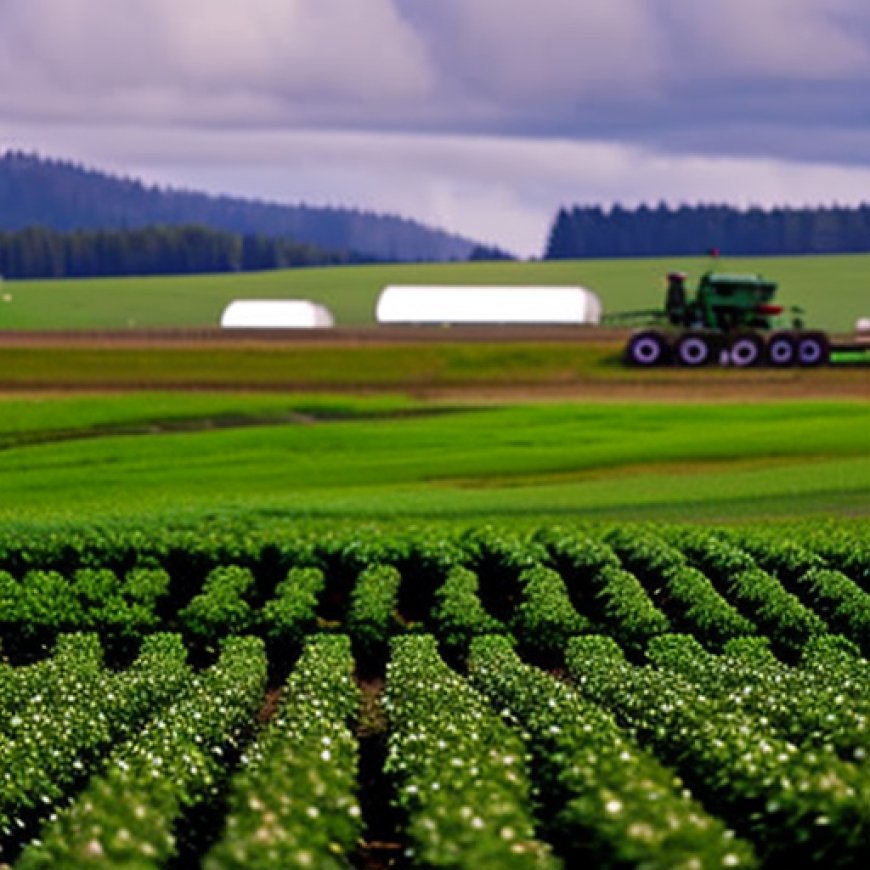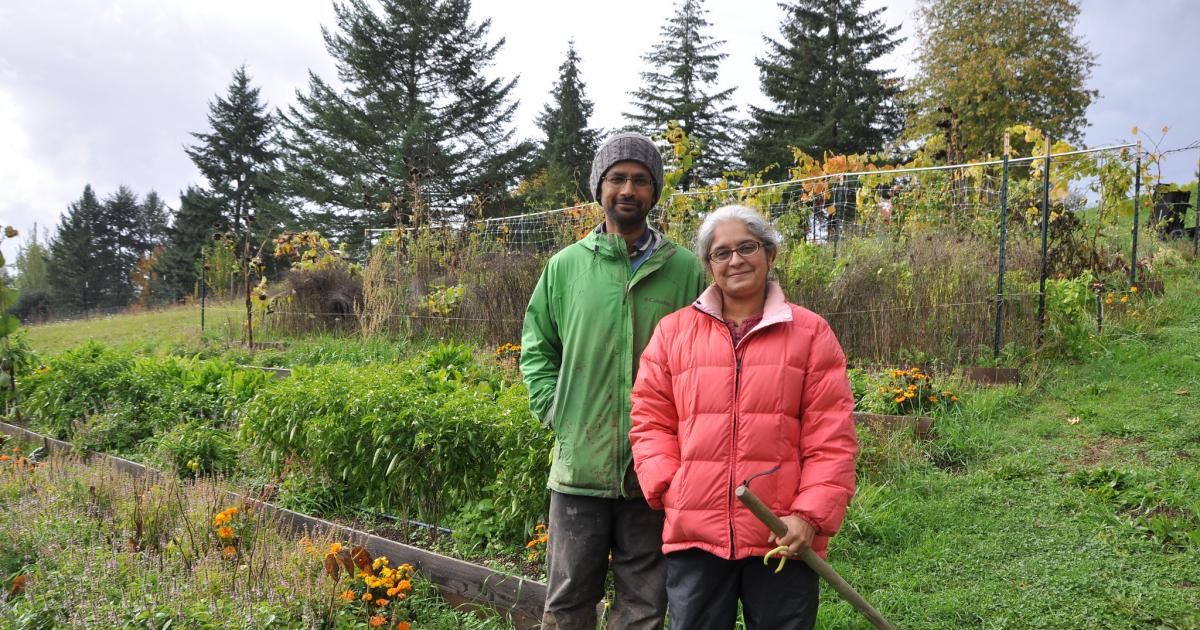Join us for Oregon USDA’s Beginning Farmer Ranchers: In The Know webinar | Natural Resources Conservation Service
Join us for Oregon USDA's Beginning Farmer Ranchers: In The ... Oregon Natural Resources Conservation Service


Beginning Farmer Ranchers: In The Know

Are you new to farming or ranching, thinking about becoming a producer or serve this audience in your work? You’re invited to Oregon USDA’s Beginning Farmer Ranchers: In The Know virtual events 2023 and 2024.
Oregon’s Beginning Farmer Rancher (BFR) Team and Natural Resources Conservation Service (NRCS) small farm, organic and urban specialists are offering opportunities to learn more about USDA programs and how they can benefit those new to farming or ranching.
Event Dates:
- Tuesday, October 17, from noon to 2 p.m.
- Tuesday, January 16, from 4 p.m. to 6 p.m.
- Upcoming dates and times TBD
The purpose of the In The Know events is to connect beginning farmers with relevant USDA resources. The USDA BFR program offers a variety of farm loan, risk management, disaster assistance, and conservation programs to support farmers, including beginning farmers and ranchers. Additionally, a number of these programs have provisions specifically for beginning farmers, including targeted funding for loans and conservation programs, as well as waivers and exemptions.
Natural Resources Conservation Service (NRCS)
The NRCS in Oregon provides voluntary technical and financial assistance to private landowners to conserve and protect their natural resources. Wallace Jennings and Stephanie Payne will present on NRCS programs and opportunities relevant to beginning and urban farmers. Contact Oregon NRCS at: Wallace.Jennings@usda.gov and Stephanie.Payne@usda.gov.
Farm Service Agency (FSA)
The FSA serves all farmers, ranchers, and agricultural partners through the delivery of effective, efficient agricultural programs for Americans. Derek Johnson is the Beginning Farmer and Rancher Outreach Coordinator and has been a Farm Loan Officer out of Malheur County for the past 5 years. Derek will be presenting on farm records, their importance, and have a brief overview of the farm loan programs FSA offers. Contact Oregon FSA at: Derek.Johnson@usda.gov.
Risk Management Agency (RMA)
The RMA Spokane Regional Office serves the states of Alaska, Idaho, Oregon, and Washington, through effective, market-based risk management tools to strengthen the economic stability of agricultural producers and rural communities. RMA is committed to increasing the availability and effectiveness of Federal crop insurance as a risk management tool. Contact Oregon RMA at: anastasia.griffin@usda.gov.
Rural Development (RD)
RD in Oregon helps support prosperity for rural Oregonians by investing in modern infrastructure, helping eligible rural Oregonians obtain affordable housing, and being a partner to help build or improve essential community facilities such as hospitals, libraries, and schools. RD boosts economic development by funding technical assistance for small business owners and entrepreneurs, helping them design business plans, find new markets, and promote their goods and services. RD also supports energy programs that finance renewable systems for agriculture and industry. Contact Oregon RD at: Mandie.Cole@usda.gov and Serena.Vigg@usda.gov.
Join us Tuesday, October 17, from 12 – 2 p.m. PST
Join us Join ZoomGov Meeting
https://www.zoomgov.com/j/1603709046
Meeting ID: 160 370 9046
One tap mobile
+16692545252,,1603709046# US (San Jose)
+14154494000,,1603709046# US (US Spanish Line)
SDGs, Targets, and Indicators
1. Which SDGs are addressed or connected to the issues highlighted in the article?
- SDG 1: No Poverty
- SDG 2: Zero Hunger
- SDG 8: Decent Work and Economic Growth
- SDG 9: Industry, Innovation, and Infrastructure
- SDG 11: Sustainable Cities and Communities
- SDG 12: Responsible Consumption and Production
- SDG 13: Climate Action
- SDG 15: Life on Land
2. What specific targets under those SDGs can be identified based on the article’s content?
- Target 1.1: By 2030, eradicate extreme poverty for all people everywhere.
- Target 2.3: By 2030, double the agricultural productivity and incomes of small-scale food producers.
- Target 8.3: Promote development-oriented policies that support productive activities, decent job creation, entrepreneurship, creativity, and innovation.
- Target 9.1: Develop quality, reliable, sustainable, and resilient infrastructure.
- Target 11.a: Support positive economic, social, and environmental links between urban, peri-urban, and rural areas.
- Target 12.2: By 2030, achieve sustainable management and efficient use of natural resources.
- Target 13.3: Improve education, awareness-raising, and human and institutional capacity on climate change mitigation, adaptation, impact reduction, and early warning.
- Target 15.1: By 2020, ensure the conservation, restoration, and sustainable use of terrestrial and inland freshwater ecosystems.
3. Are there any indicators mentioned or implied in the article that can be used to measure progress towards the identified targets?
- Indicator 1.1.1: Proportion of population below the international poverty line.
- Indicator 2.3.1: Volume of production per labor unit by classes of farming/pastoral/forestry enterprise size.
- Indicator 8.3.1: Proportion of informal employment in non-agriculture employment.
- Indicator 9.1.1: Proportion of the rural population who live within two kilometers of an all-season road.
- Indicator 11.a.1: Proportion of population living in cities that implement urban and regional development plans integrating population projections and resource needs.
- Indicator 12.2.1: Material footprint, material footprint per capita, and material footprint per GDP.
- Indicator 13.3.2: Number of countries that have communicated the strengthening of institutional, systemic, and individual capacity-building to implement adaptation, mitigation, and technology transfer.
- Indicator 15.1.1: Forest area as a proportion of total land area.
SDGs, Targets, and Indicators
| SDGs | Targets | Indicators |
|---|---|---|
| SDG 1: No Poverty | Target 1.1: By 2030, eradicate extreme poverty for all people everywhere. | Indicator 1.1.1: Proportion of population below the international poverty line. |
| SDG 2: Zero Hunger | Target 2.3: By 2030, double the agricultural productivity and incomes of small-scale food producers. | Indicator 2.3.1: Volume of production per labor unit by classes of farming/pastoral/forestry enterprise size. |
| SDG 8: Decent Work and Economic Growth | Target 8.3: Promote development-oriented policies that support productive activities, decent job creation, entrepreneurship, creativity, and innovation. | Indicator 8.3.1: Proportion of informal employment in non-agriculture employment. |
| SDG 9: Industry, Innovation, and Infrastructure | Target 9.1: Develop quality, reliable, sustainable, and resilient infrastructure. | Indicator 9.1.1: Proportion of the rural population who live within two kilometers of an all-season road. |
| SDG 11: Sustainable Cities and Communities | Target 11.a: Support positive economic, social, and environmental links between urban, peri-urban, and rural areas. | Indicator 11.a.1: Proportion of population living in cities that implement urban and regional development plans integrating population projections and resource needs. |
| SDG 12: Responsible Consumption and Production | Target 12.2: By 2030, achieve sustainable management and efficient use of natural resources. | Indicator 12.2.1: Material footprint, material footprint per capita, and material footprint per GDP. |
| SDG 13: Climate Action | Target 13.3: Improve education, awareness-raising, and human and institutional capacity on climate change mitigation, adaptation, impact reduction, and early warning. | Indicator 13.3.2: Number of countries that have communicated the strengthening of institutional, systemic, and individual capacity-building to implement adaptation, mitigation, and technology transfer. |
| SDG 15: Life on Land | Target 15.1: By 2020, ensure the conservation, restoration, and sustainable use of terrestrial and inland freshwater ecosystems. | Indicator 15.1.1: Forest area as a proportion of total land area. |
Behold! This splendid article springs forth from the wellspring of knowledge, shaped by a wondrous proprietary AI technology that delved into a vast ocean of data, illuminating the path towards the Sustainable Development Goals. Remember that all rights are reserved by SDG Investors LLC, empowering us to champion progress together.
Source: nrcs.usda.gov

Join us, as fellow seekers of change, on a transformative journey at https://sdgtalks.ai/welcome, where you can become a member and actively contribute to shaping a brighter future.







